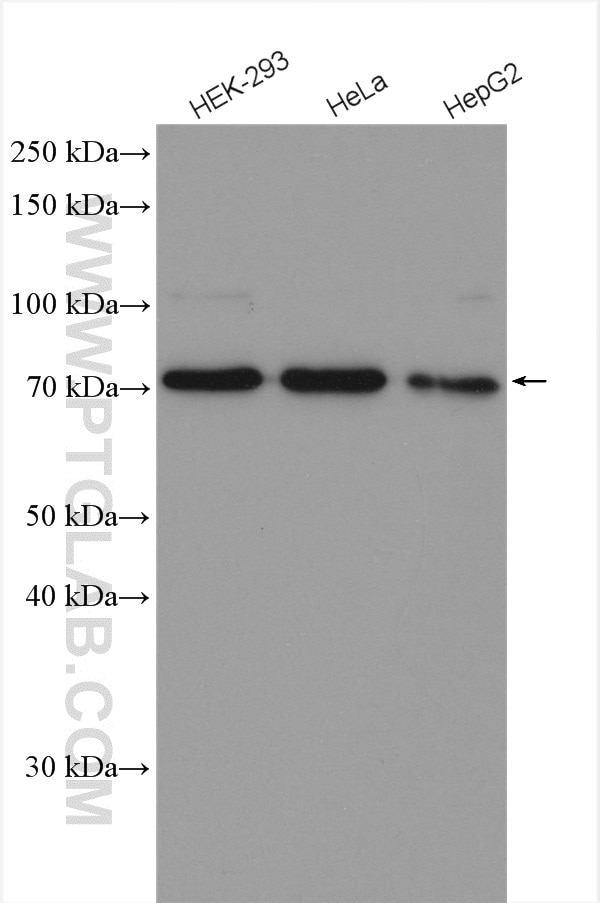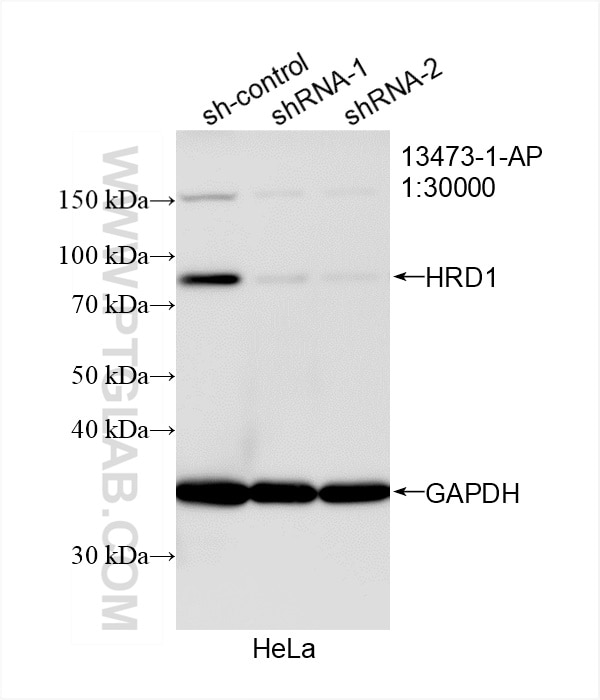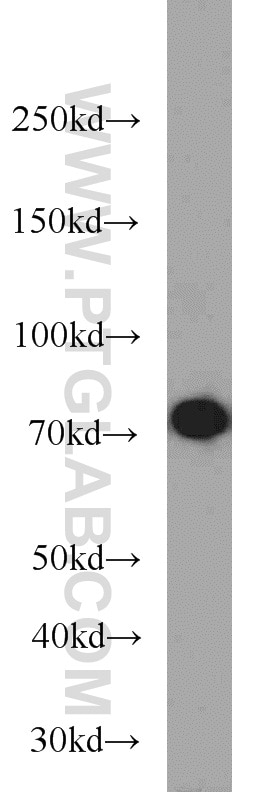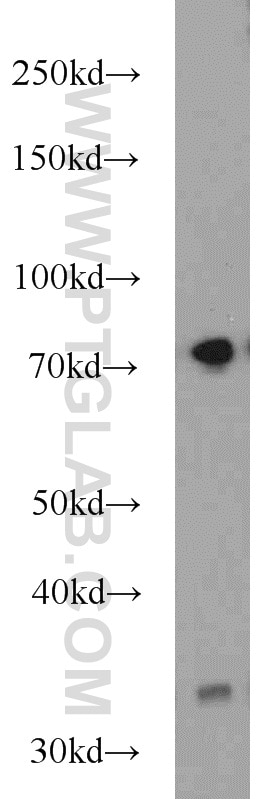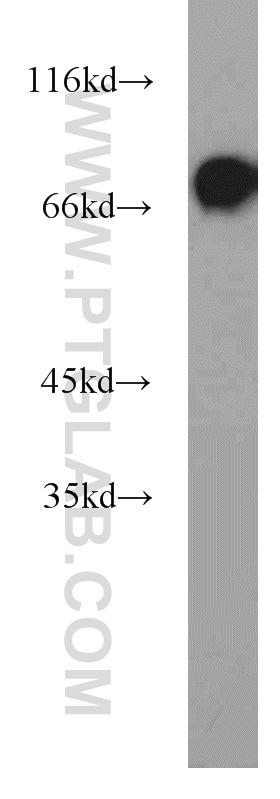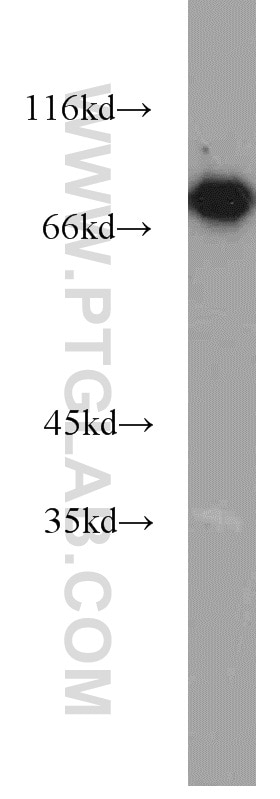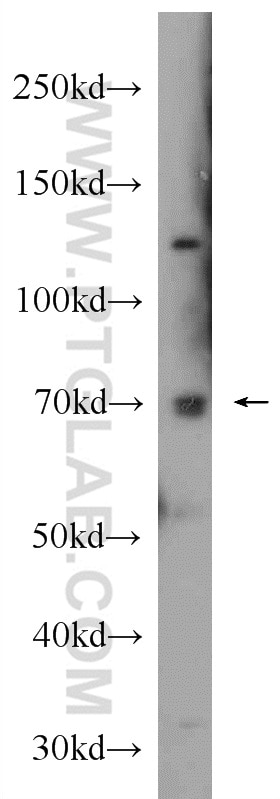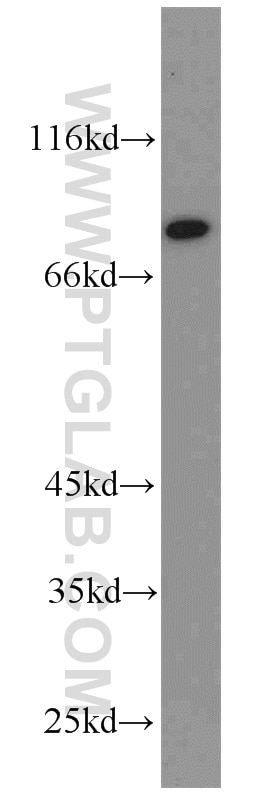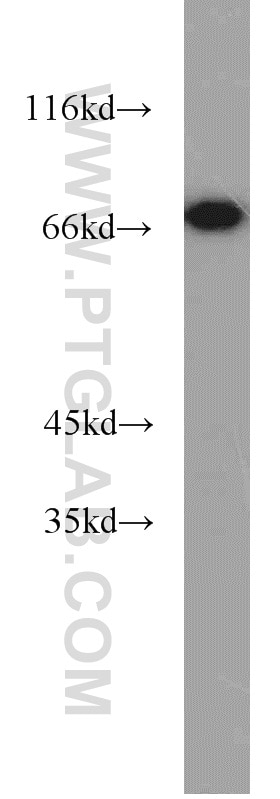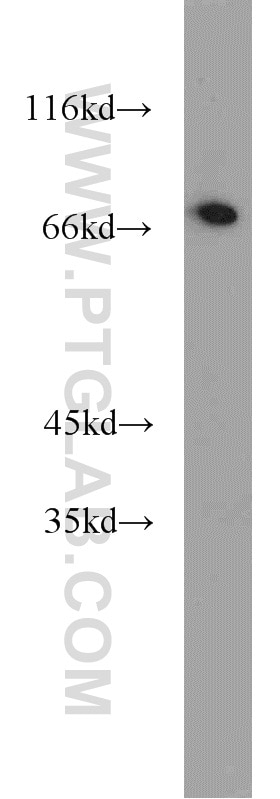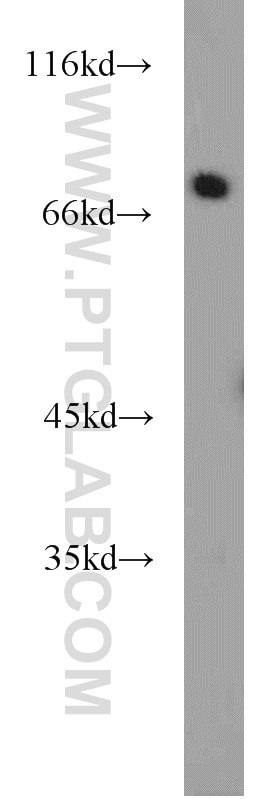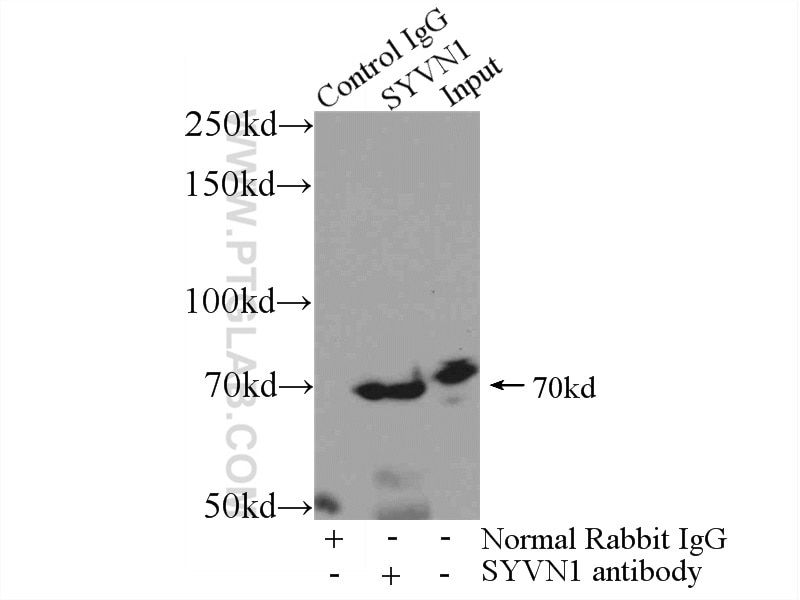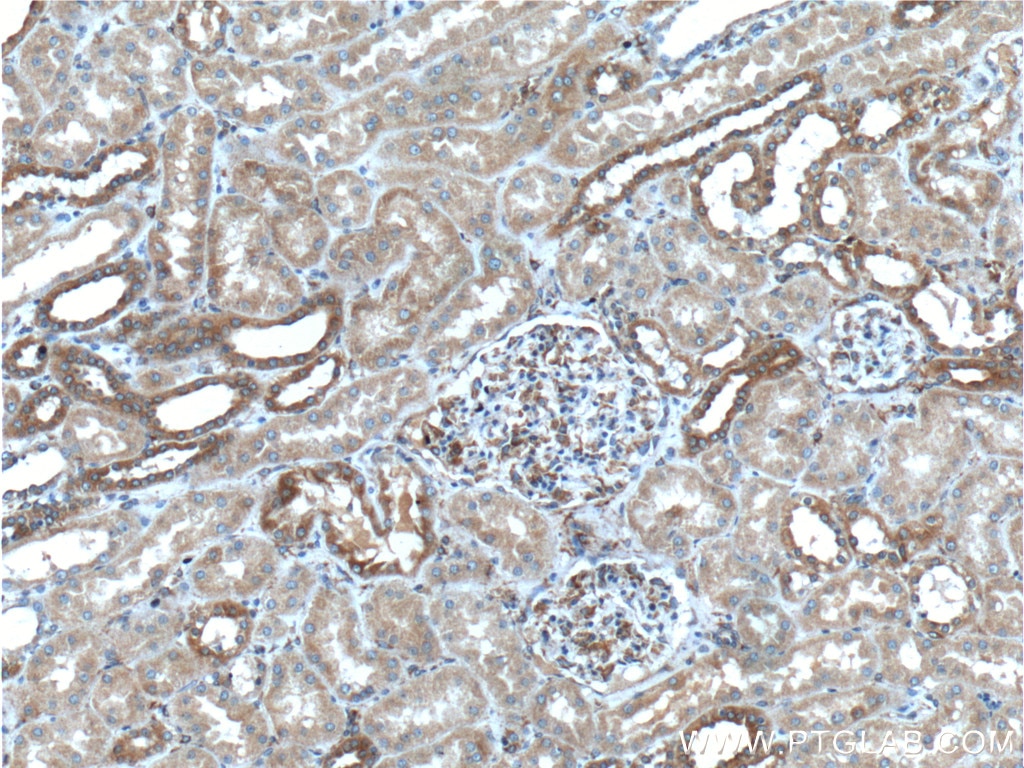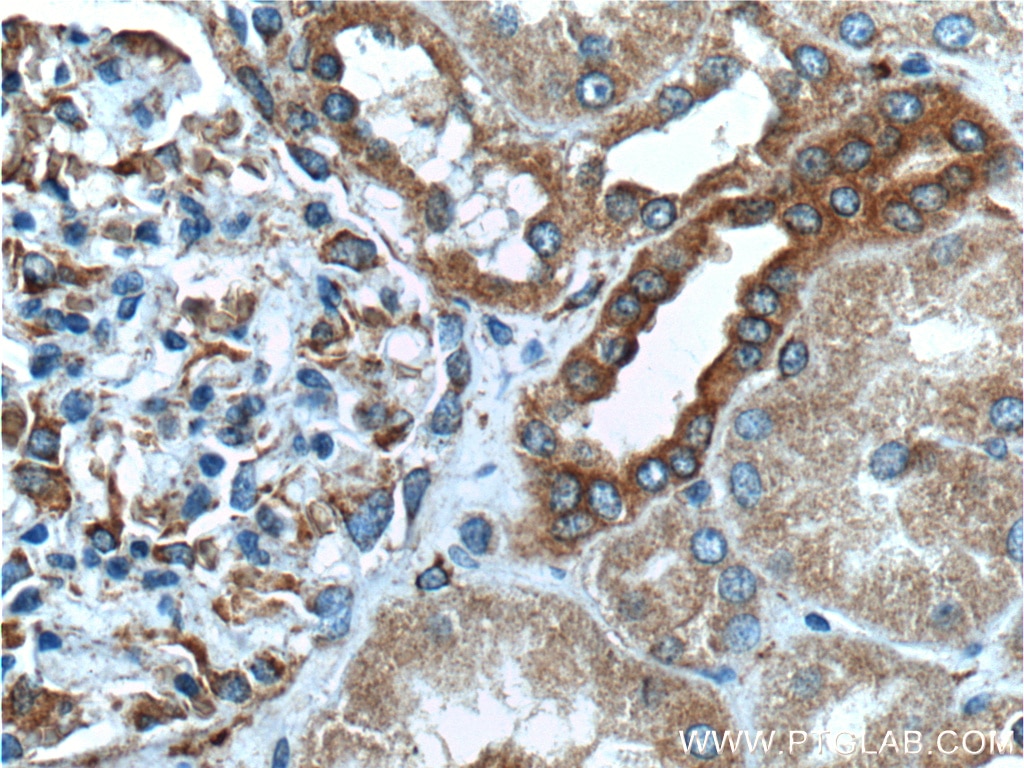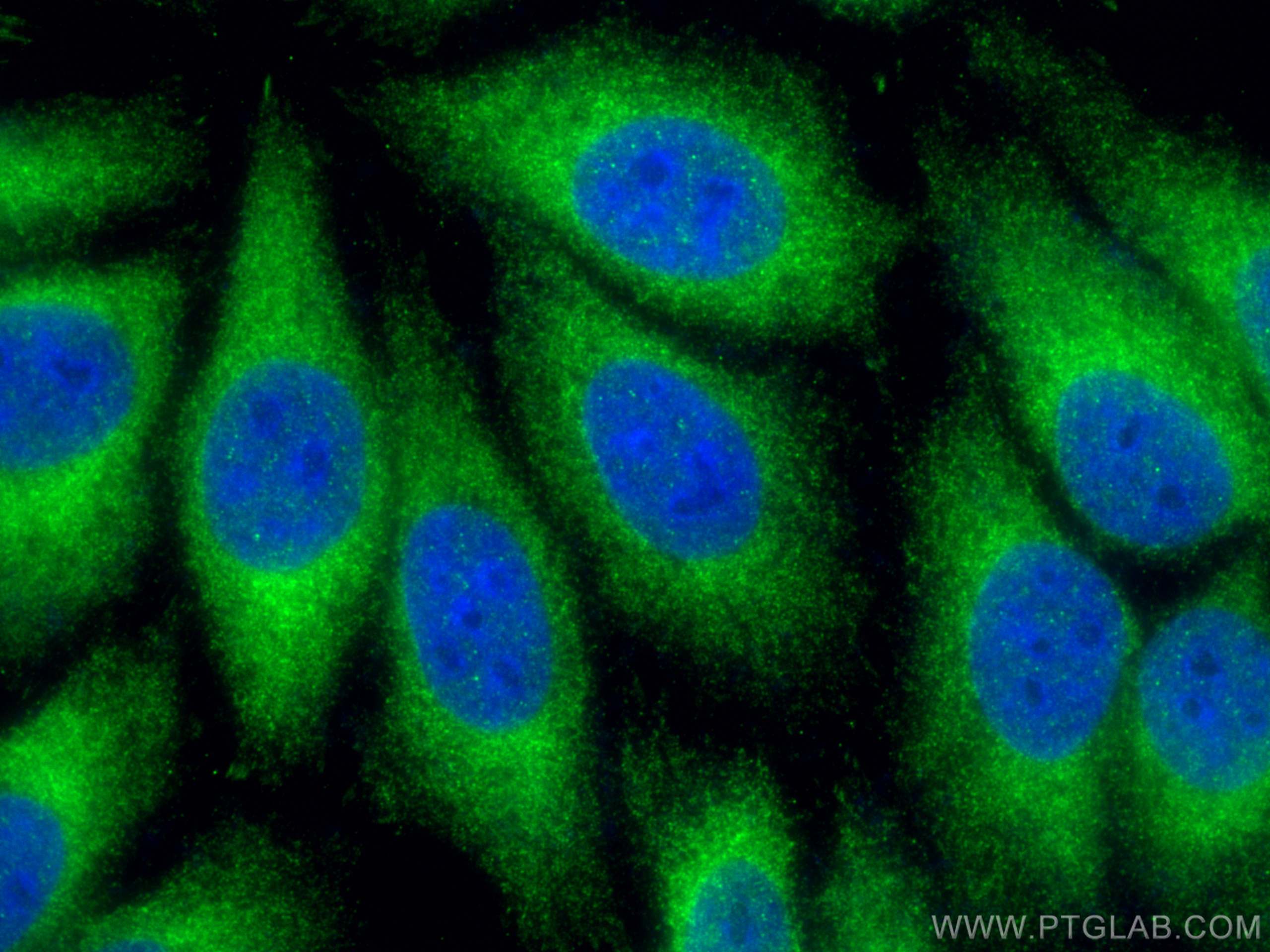- Phare
- Validé par KD/KO
Anticorps Polyclonal de lapin anti-HRD1/SYVN1
HRD1/SYVN1 Polyclonal Antibody for WB, IHC, IF/ICC, IP, ELISA
Hôte / Isotype
Lapin / IgG
Réactivité testée
Humain, rat, souris
Applications
WB, IHC, IF/ICC, IP, CoIP, IP-MS, ELISA
Conjugaison
Non conjugué
N° de cat : 13473-1-AP
Synonymes
Galerie de données de validation
Applications testées
| Résultats positifs en WB | cellules HEK-293, cellules HeLa, cellules HepG2, cellules MDA-MB-453s, cellules NIH/3T3, cellules Raji, tissu d'estomac de rat, tissu d'estomac de souris, tissu ovarien de souris, tissu pancréatique de souris, tissu rénal de souris |
| Résultats positifs en IP | tissu rénal de souris |
| Résultats positifs en IHC | tissu rénal humain il est suggéré de démasquer l'antigène avec un tampon de TE buffer pH 9.0; (*) À défaut, 'le démasquage de l'antigène peut être 'effectué avec un tampon citrate pH 6,0. |
| Résultats positifs en IF/ICC | cellules HepG2, |
Dilution recommandée
| Application | Dilution |
|---|---|
| Western Blot (WB) | WB : 1:1000-1:4000 |
| Immunoprécipitation (IP) | IP : 0.5-4.0 ug for 1.0-3.0 mg of total protein lysate |
| Immunohistochimie (IHC) | IHC : 1:50-1:500 |
| Immunofluorescence (IF)/ICC | IF/ICC : 1:50-1:500 |
| It is recommended that this reagent should be titrated in each testing system to obtain optimal results. | |
| Sample-dependent, check data in validation data gallery | |
Applications publiées
| KD/KO | See 12 publications below |
| WB | See 52 publications below |
| IHC | See 3 publications below |
| IF | See 7 publications below |
| IP | See 6 publications below |
| CoIP | See 4 publications below |
Informations sur le produit
13473-1-AP cible HRD1/SYVN1 dans les applications de WB, IHC, IF/ICC, IP, CoIP, IP-MS, ELISA et montre une réactivité avec des échantillons Humain, rat, souris
| Réactivité | Humain, rat, souris |
| Réactivité citée | rat, Humain, souris |
| Hôte / Isotype | Lapin / IgG |
| Clonalité | Polyclonal |
| Type | Anticorps |
| Immunogène | HRD1/SYVN1 Protéine recombinante Ag4267 |
| Nom complet | synovial apoptosis inhibitor 1, synoviolin |
| Masse moléculaire calculée | 617 aa, 68 kDa |
| Poids moléculaire observé | 68-76 kDa |
| Numéro d’acquisition GenBank | BC030530 |
| Symbole du gène | HRD1 |
| Identification du gène (NCBI) | 84447 |
| Conjugaison | Non conjugué |
| Forme | Liquide |
| Méthode de purification | Purification par affinité contre l'antigène |
| Tampon de stockage | PBS avec azoture de sodium à 0,02 % et glycérol à 50 % pH 7,3 |
| Conditions de stockage | Stocker à -20°C. Stable pendant un an après l'expédition. L'aliquotage n'est pas nécessaire pour le stockage à -20oC Les 20ul contiennent 0,1% de BSA. |
Informations générales
HRD1is also named as SYVN1(Synovial apoptosis inhibitor 1) , KIAA1810. It acts as an E3 ubiquitin-protein ligase which accepts ubiquitin specifically from endoplasmic reticulum-associated UBC7 E2 ligase and transfers it to substrates, promoting their degradation. Two distinct binding sites mediate Hrd1 dimerization or oligomerization, one located within the transmembrane region and another within the cytosolic domain. (PMID:19864457).Western blot analysis detected abundant HRD1 expression in liver and kidney. Mouse liver and spleen expressed Hrd1 as an 85-kD protein(PMID:12646171).
Protocole
| Product Specific Protocols | |
|---|---|
| WB protocol for HRD1/SYVN1 antibody 13473-1-AP | Download protocol |
| IHC protocol for HRD1/SYVN1 antibody 13473-1-AP | Download protocol |
| IF protocol for HRD1/SYVN1 antibody 13473-1-AP | Download protocol |
| IP protocol for HRD1/SYVN1 antibody 13473-1-AP | Download protocol |
| Standard Protocols | |
|---|---|
| Click here to view our Standard Protocols |
Publications
| Species | Application | Title |
|---|---|---|
Cell Metab AIDA Selectively Mediates Downregulation of Fat Synthesis Enzymes by ERAD to Retard Intestinal Fat Absorption and Prevent Obesity. | ||
J Clin Invest Hypomorphic variants of SEL1L-HRD1 ER-associated degradation are associated with neurodevelopmental disorders | ||
Mol Cancer CircNR3C2 promotes HRD1-mediated tumor-suppressive effect via sponging miR-513a-3p in triple-negative breast cancer. | ||
Mol Cell Redundant and Antagonistic Roles of XTP3B and OS9 in Decoding Glycan and Non-glycan Degrons in ER-Associated Degradation.
| ||
Nat Commun PGRMC1 acts as a size-selective cargo receptor to drive ER-phagic clearance of mutant prohormones. |
